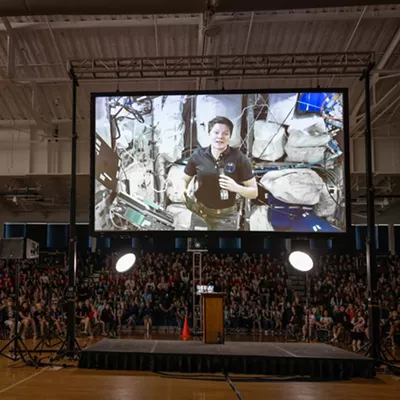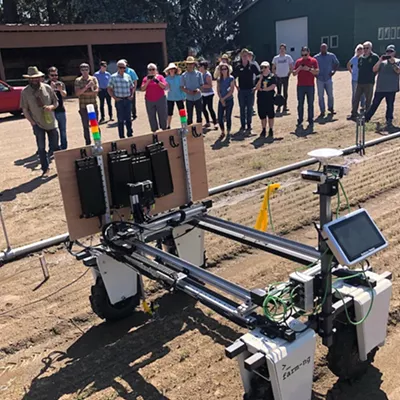Who wouldn't be tempted? A picture-perfect ski run topped with virgin, cloud-soft powder. Nothing but pure, beckoning wilderness and untouched slopes. Just you and the mountain, slicing perfect S-turns in a state of total bliss. Every skiing magazine or snowboarding movie is filled with such images, but they often ignore the dangers of the backcountry. More than ever, people are seeking the sport's version of the ultimate experience -- which means, now more than ever, out is in.
Over the past decade, the drive to venture beyond the boundaries of ski resorts has been growing. Better equipment has made backcountry skiing and snowboarding easier, and the limits of "extreme skiing" continue to be pushed. Predictably, the number of backcountry incidents has also increased. Last year set the modern-day record, with 35 avalanche-related deaths in the U.S. -- 13 of which were backcountry skiers and snowboarders. Last January, Joshua Williams, a 16-year-old from Sammamish, Wash., died while snowboarding in a closed area of the Alpental area of the Summit at Snoqualmie. According to reports, he was snowboarding with friends when his group ventured into a permanently closed area. Williams apparently tried to stop above a 30-foot cliff when he was carried over the edge, landing headfirst in deep snow. He suffocated before his friends could reach him.
"It's always been a problem," says Gary Deaver, Ski Patrol director at 49Degrees North, "but it trends up every year. One of the things I can guarantee to have a problem with is whatever is hip in the newest snowboarding videos. [It] will filter onto our hill almost immediately. Two years ago, the big thing was gap-jumping over roads. I spent all winter busting down jumps at the high side of roads."
Deaver figures he averages one search or rescue about every eight days. He says the biggest problem is the lack knowledge about the backcountry and inadequate gear. "I can't tell you how many kids I've pulled out of there at 9:30, 10 o'clock at night in cotton, flannel shirts, cotton pants wondering why they're cold and damn-near dying."
At Silver Mountain last January, two college kids who ventured off the backside of the mountain were lucky to survive when they got lost and were rescued three days later after an intensive search and rescue effort. Pat Nowak of Silver Mountain has little patience for people who knowingly ski out of bounds and are unprepared.
"It's just a pain in the butt," says Nowak. "You hear about all these people getting lost all the time, and it's because there are stories that glorify backcountry skiing out of ski resorts, and it's dangerous. You get lost in that backcountry, you're going to die unless we find you."
And it's not cheap, especially when using $1,000-an-hour Air Force helicopters, which were used in the Silver search. "Last year, it cost us tens of thousands of dollars to look for idiots who went out of bounds," says Nowak. "There's a law now in Idaho that when you do that, you incur all the search-and-rescue costs. People need to know when you cross the boundary, you're going on your own."
Even though ski resorts clearly mark their boundaries with ropes and warning signs, it is difficult to keep people from ducking the ropes for the tantalizing backcountry. Many resorts have tried to counteract the trend by creating new runs through trees or glades, but, "It's impossible to keep people from going out-of-bounds," says Tom Trulock, mountain manager at Schweitzer. "Our approach to this has been to establish gates in those spots where people go in and out of bounds. We don't have signs encouraging people to go out of bounds, but we've acknowledged that they're going to. So we've decided they'll get a boatload of information at the gate that says we aren't responsible for what happens to you if you go out there."
However, Trulock sees the violation of avalanche-related closures as another issue. He's working with the county to establish an ordinance that would impose criminal liability on anyone entering a closed avalanche area. Entering a closed area is considered trespassing, while going out of bounds is where the ski area is no longer responsible.
Trulock understands why people would leave the groomed runs for the untracked wilderness -- it's the allure that keeps guided heli-skiing and snowcat ski operations in business. "Backcountry skiing is wonderful. I'd be the first person to tell you it's a beautiful experience and an absolutely wonderful place to be. There are a lot of people who are very knowledgeable about the backcountry and understand where and when they can go out there, and that's fine. But the trick with a ski resort is, 95 percent of the people who are skiing on a given day don't fit in that category of knowledge. I can tell you, if we go looking for someone, they'll receive a bill for our services."
Deaver, sounding like a man who has seen more than his share of knuckleheads, adds, "I've been doing this for 19 years now. And I've gotten to the point where I care about the people who got lost, but I care more about the guy on my search team who's home at 6:30 having dinner with his family and I have to drag his butt out to go look for some 17-year-old who thought he was in a movie."
















